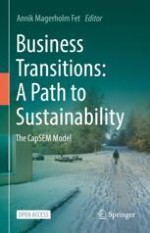17.1 Introduction
17.2 Mapping Plastics from Processes Within Fishing Sector
Stakeholder category | Data obtained for MFA model from stakeholders | Information provided to stakeholders from MFA study | Application |
|---|---|---|---|
Gear producers | Annual quantities of FGs sold and material components of each FG type | Amount of FG sold of each type, The market/demand for each type of FGs, The typical tendencies of repair and reuse Need for material improvement for ease in recycling | Development of new FG design suitable for recycling Assessing need for building repair facilities for fishers |
Fishers (resource users) | Typical life span of FGs, repair and disposal patterns, purchase patterns and typical rate of FG loss in the ocean upon deployment | The typical life span of FG types The FGs types more vulnerable to get lost in the ocean upon deployment The typical repair patterns of various FG types | Developing best practice guide for handling and management of FG types |
Beach clean-up programme | Typical amount of FGs plastic collected through beach clean-up surveys | Efficiency of clean-up operations Need for effective and efficient data management plan | Best practice guide for effective classification and reporting of collected waste items |
Regulatory actors | Typical amount of FGs plastic collected through ocean clean-up surveys | Efficiency of clean-up operations Data on potential hotspots for leakage of plastics in the environment Information for effective policy making | Suitable regulatory response for management of plastics from fishing sector |
Waste management companies | Typical volume of waste FGs handled annual by WMCs, typical fate of waste FGs (sent to recycle, incineration or landfilling) | The typical handling patterns of waste FGs The amounts of waste FGs generated every year | Best practice guide for waste managers for effective segregation of waste FGs to improve recycling |
Recyclers | Typical challenges in FG recycling | The amounts of waste FGs generated every year The typical rate of recycling of FGs Challenges in FG recycling The amounts of recycled polymers produced every year | Considering business case of recycling Improvement in infrastructure for recycling within the region |
